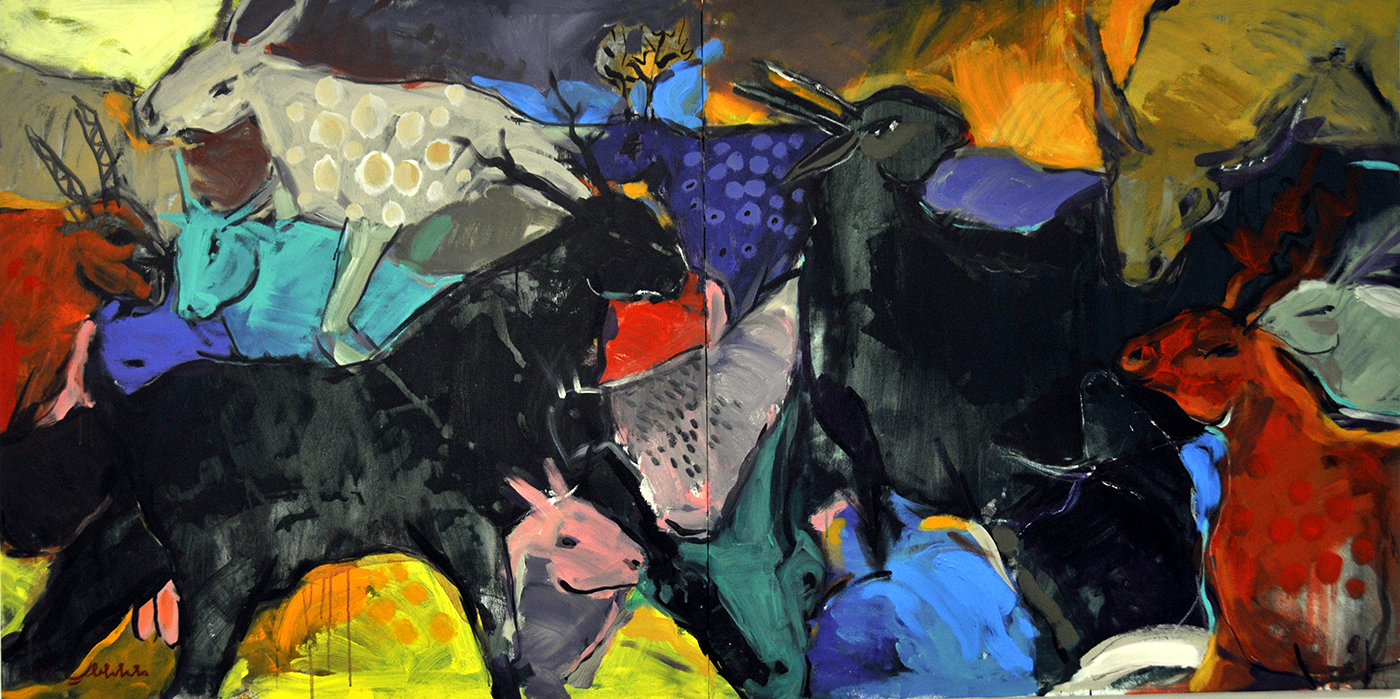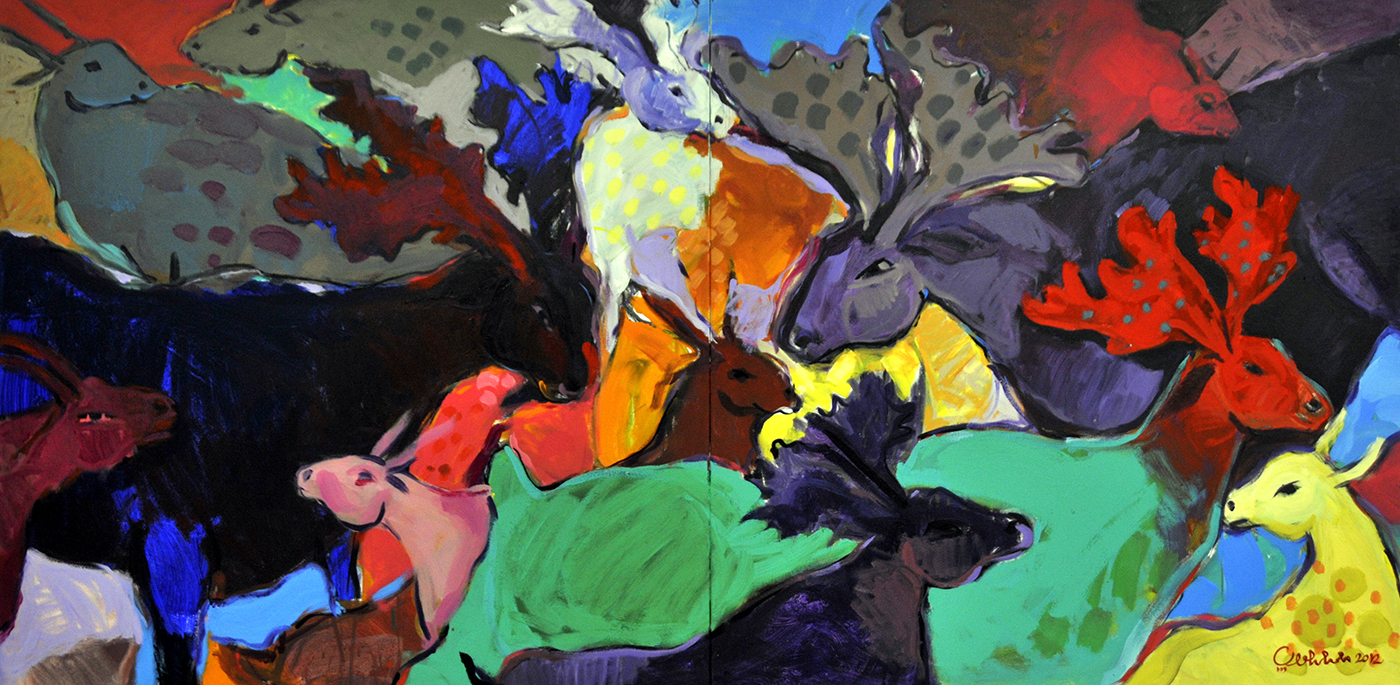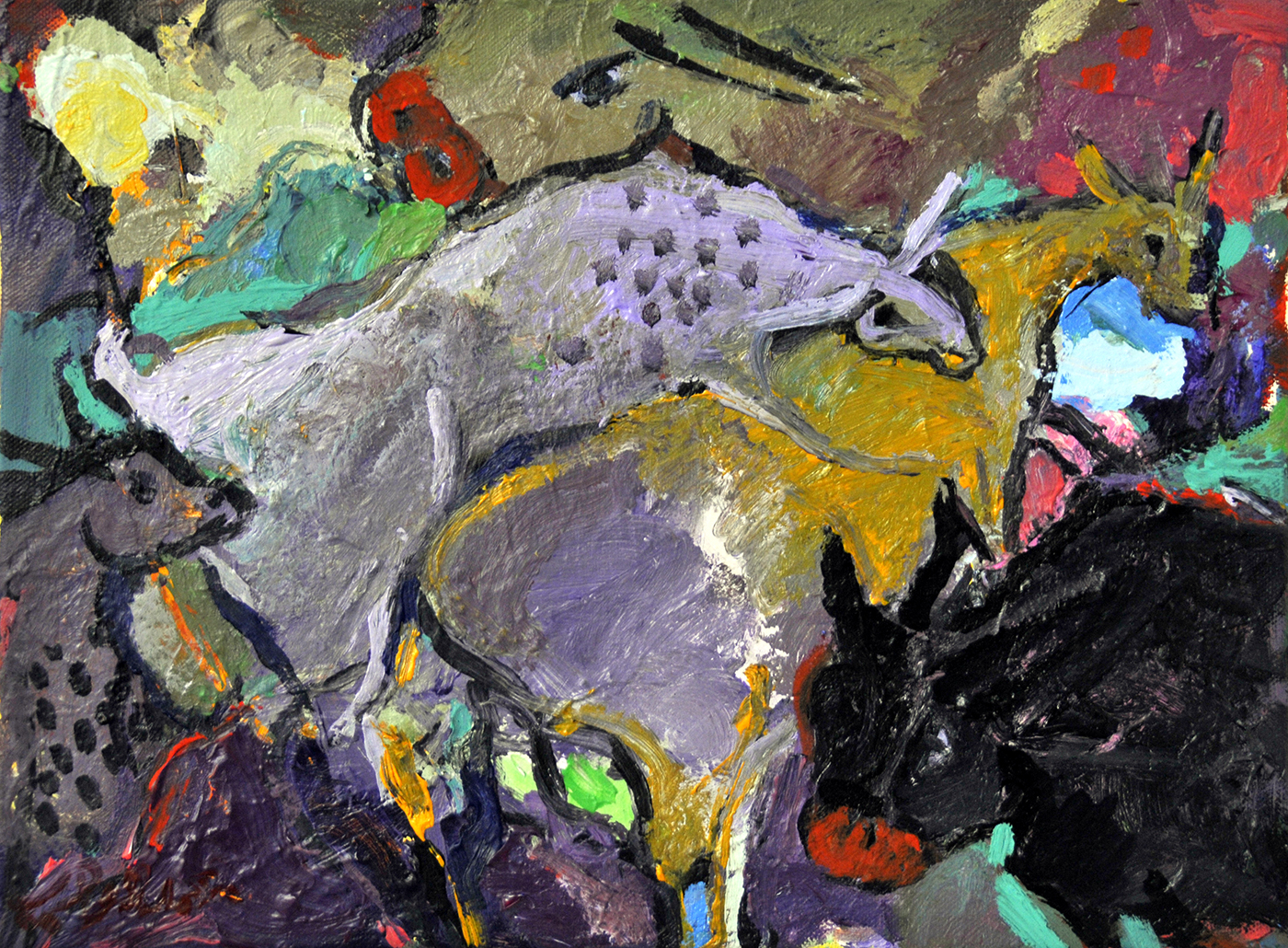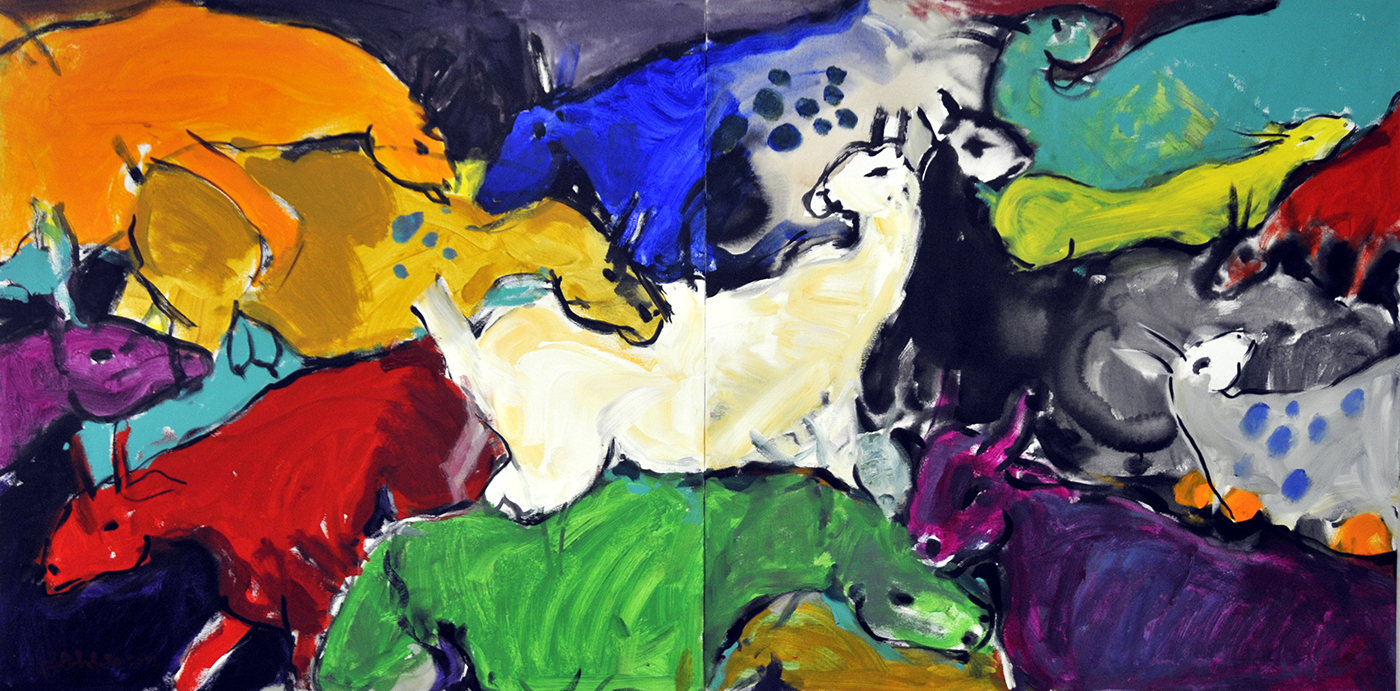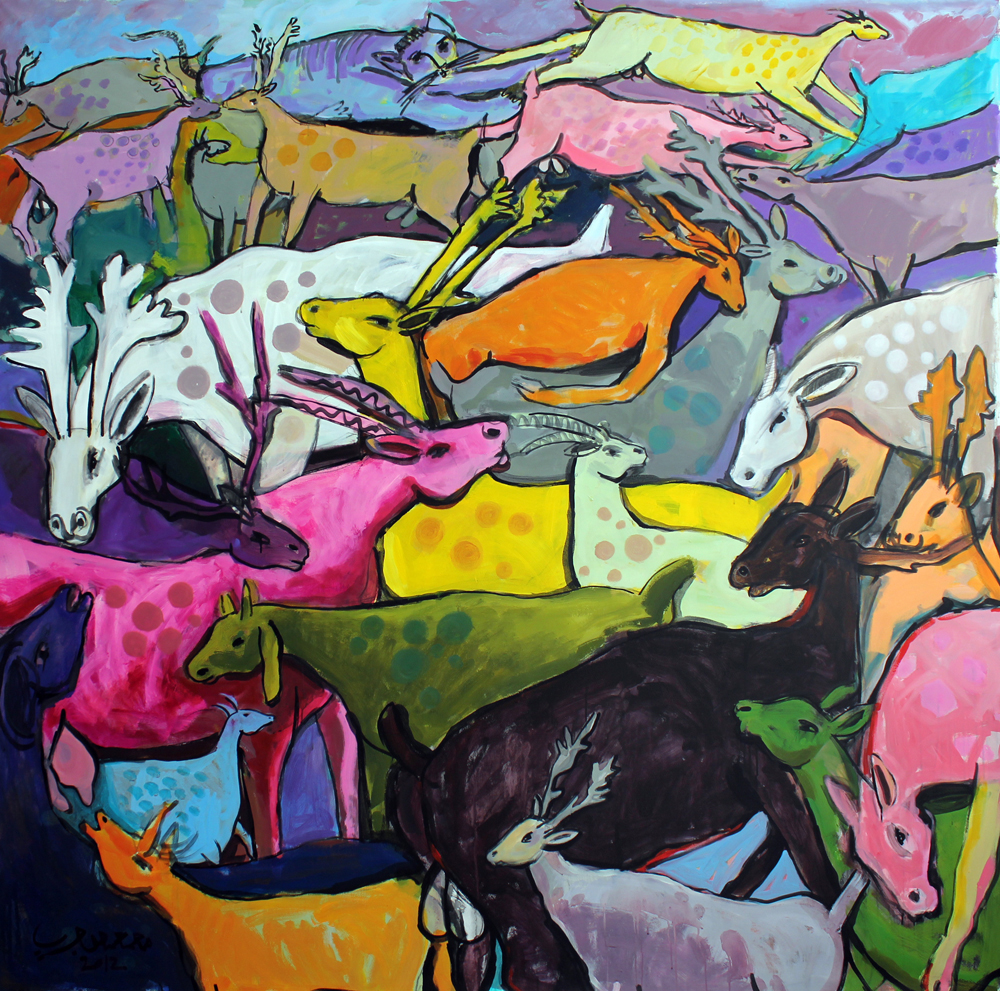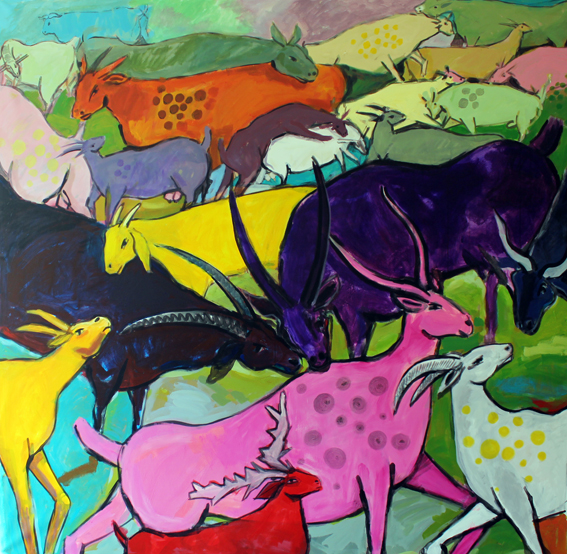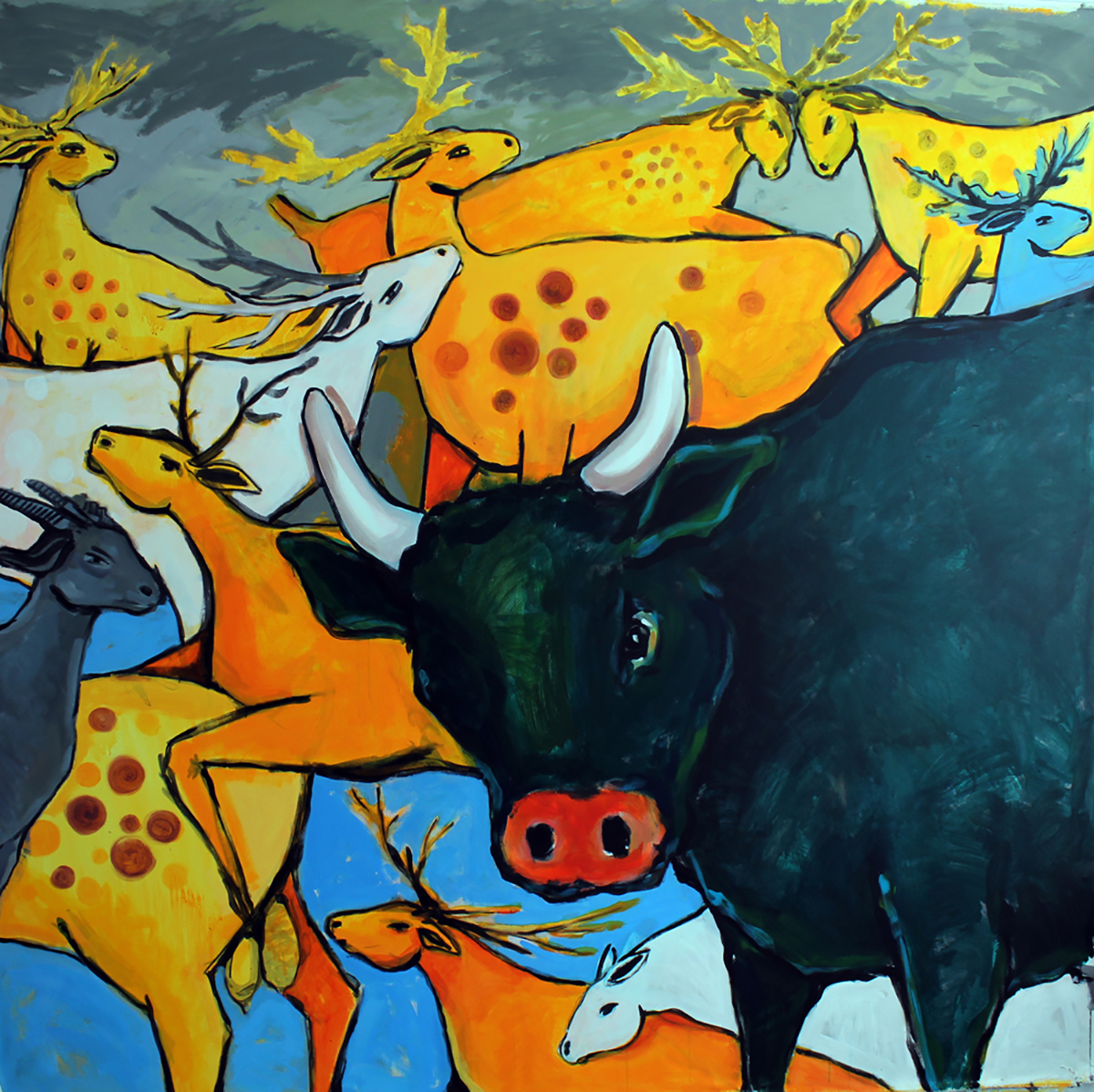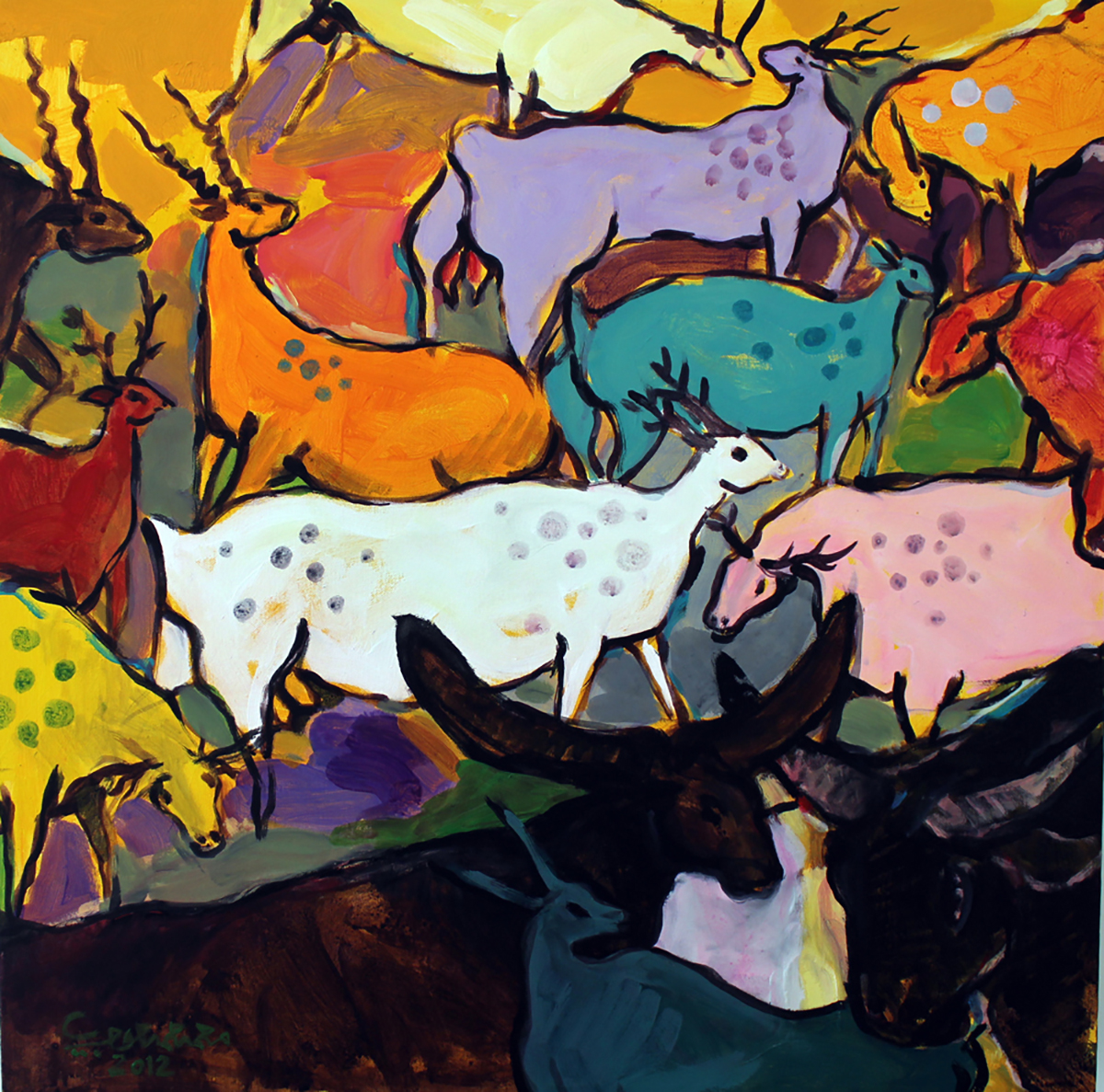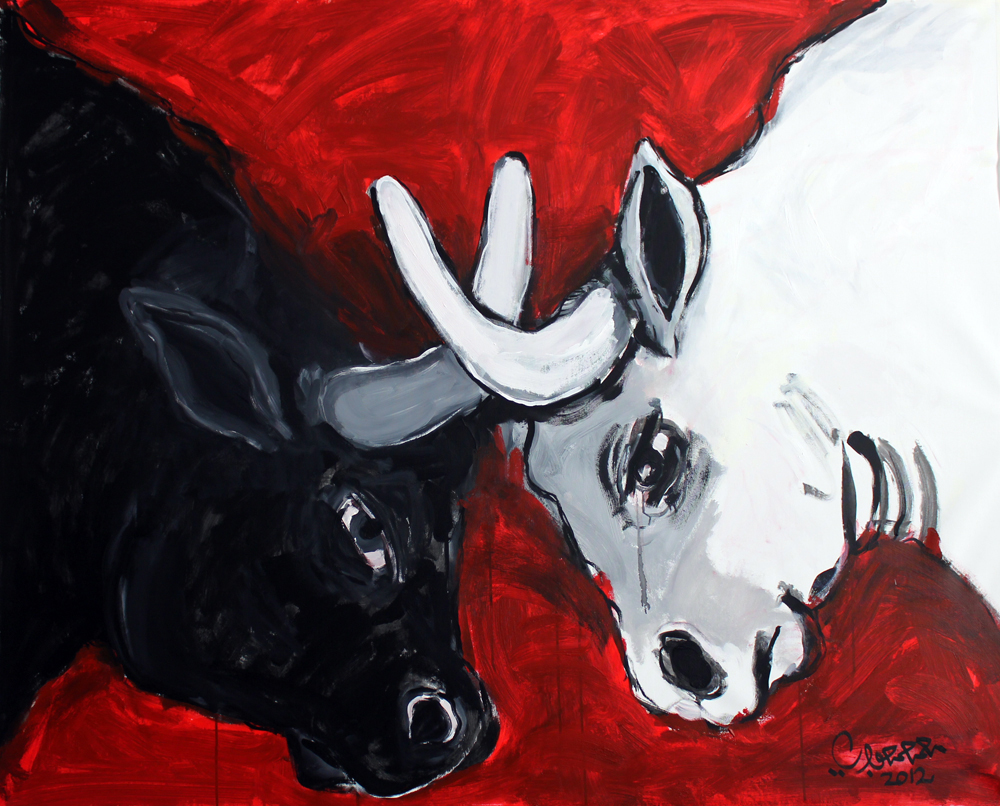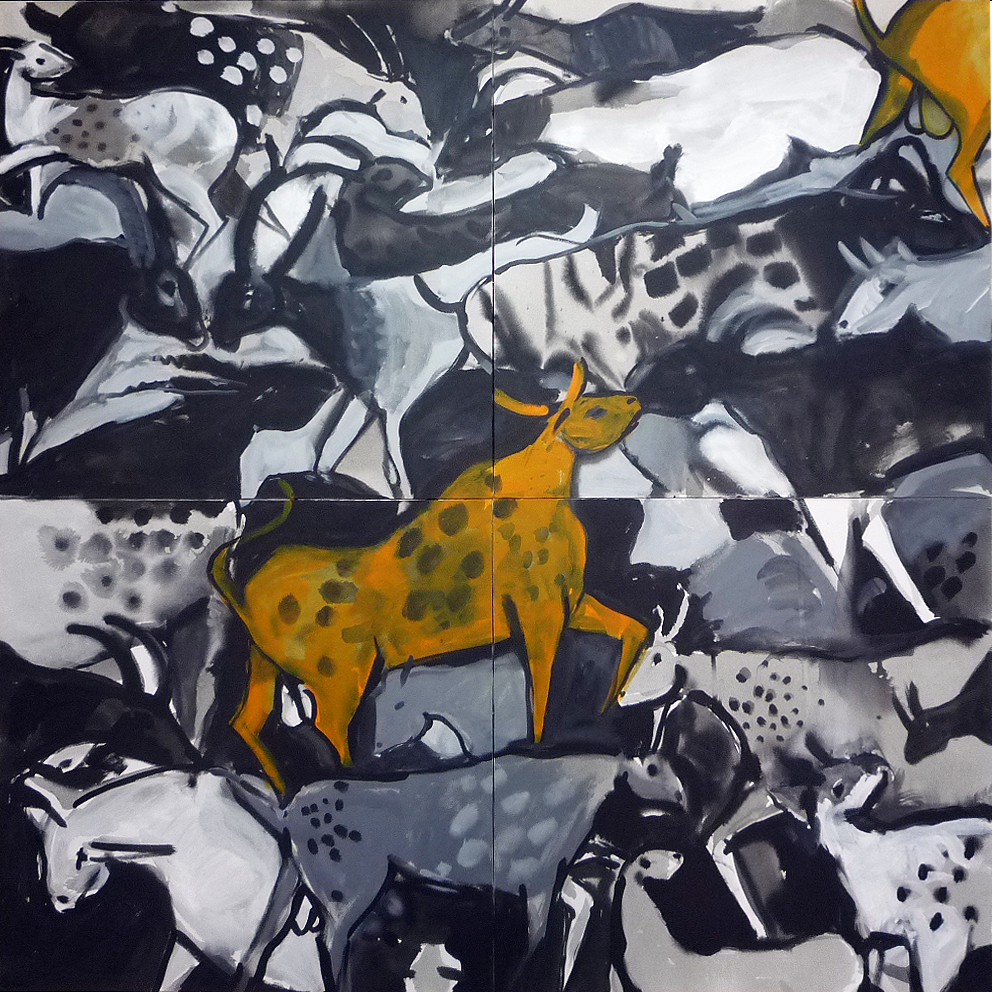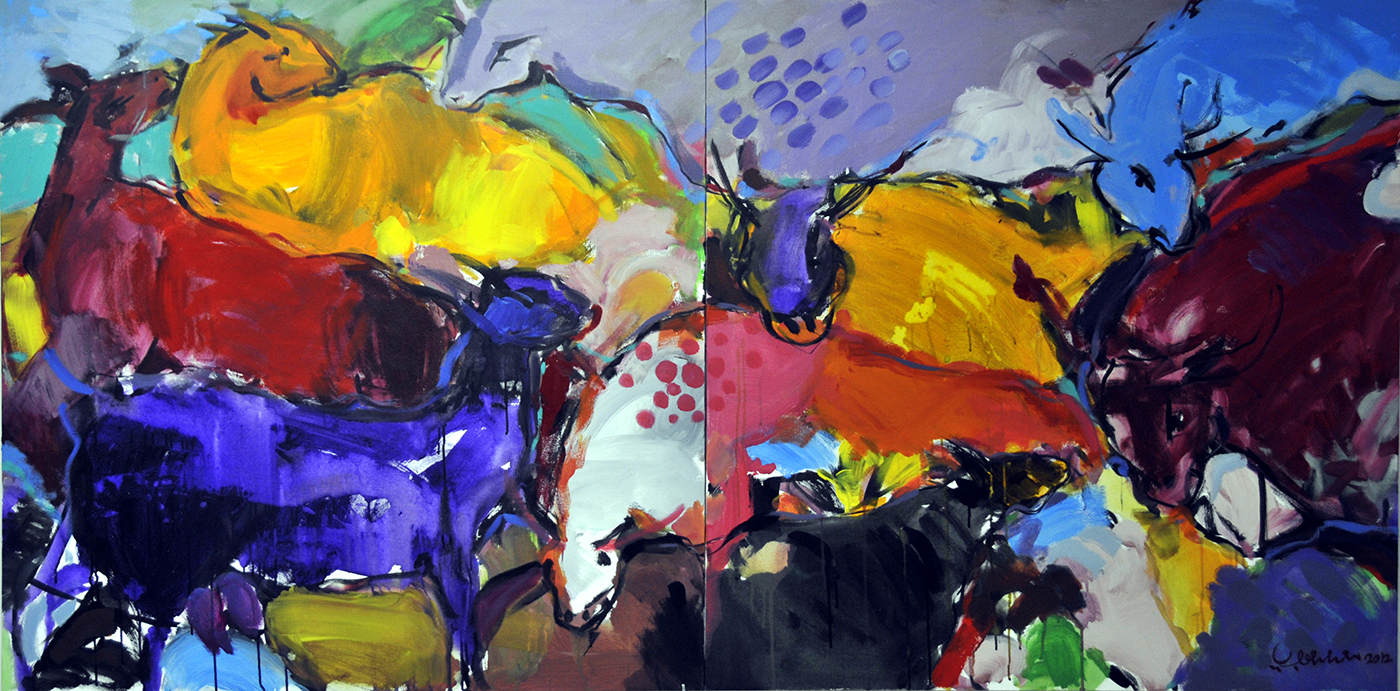Animals Farm
Where Childhood & Dream Can Be
He told me that his animals were inspired from the period of his childhood with his grandmother… and I believed. I believed also that his grandma used to have a blue gazelle, red cow and a spotted camel. I believed because I understand that as an artist Mohammed has his own very special memory of childhood. An imagined memory not only of his grandma’s animals but of his own, animated to become part of what he is. Simple, spontaneous and unusual, the paintings convey initial feelings of joyfulness that after little contemplation those feelings would fade away leaving some confusion and sorrow as we realize the narrow space these animals are locked in. Seeing these paintings with the animals typifying a lot of symbolism we can’t but to remember George Orwell’s” Animal farm”, a novel with its animals’ characters being personified. Orwell sought to mock his society that apparently looks ideal while in fact it is very much flawed. In that Orwell presented a social criticism through the world of animals.
In Mohammed works, paradox and harmony overlap between the different feelings of joy and sorrow, stillness and rowdiness, suppression and freedom to further coexist portraying a revolutionary peace. Mohammed didn’t use average calm colors, but he occupies his paintings with shining colorful shape and texture of colors like a carnival. He also goes beyond reality to portray a different world of childhood and dream.
These late Art works of Mohammed convey his reflection on the variant visual experiences he has enjoyed. Within his works we may explore the epidemiological art of caves B.C. A period of time that for mysterious rituals man used to draw wild fierce animals in order to control them. We may also explore the condition of war and anxiety that previously Picasso introduced in Guernica. The dynamic rowdiness of color in his works resemble to great extent that of the Impressionism and Fauvism painters known in their expressive language of color and bold drawing challenging the old laws of art. We see here, local and individual metaphors very sensitive that Mohammed employed to convey a living painful reality in Gaza transformed into a world of hope and dream.
Vera Tamari Ramallah- June 2011
Drawing animals has always been a field of brilliance in the Islamic world. Talking about that, we’re due to remember the famous drawings in the stories of Kalila and Demna and the great works of Cordo in Mazar-e Sharif passing Damascus. And now from Gaza, in the 21st century, Mohammed is bridging the gap of the old Islamic drawings through his high potency of portraying animals using very strong colors intensifying and occupying every little space like a genuine song of life. We see also through his works a presentation of an ideal every day pasture. Is it in Gaza, Palestine? Definitely Mohammed has won a real triumph having us compelled to visit where he used to live.
The CCF is pleased to support Mohammed Al-Hawajri in this new program fostered by the Qattan foundation.
Jean MATHIO, Director General, CCF, Gaza 2011


